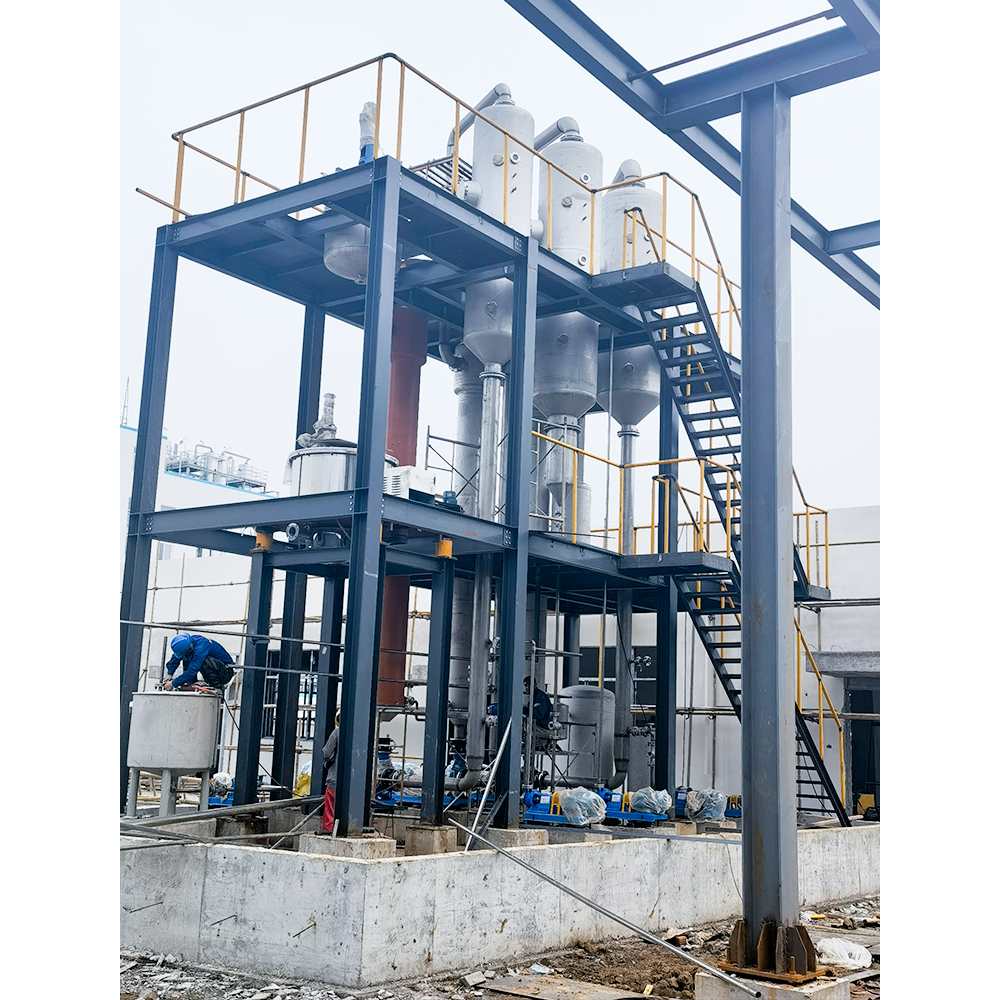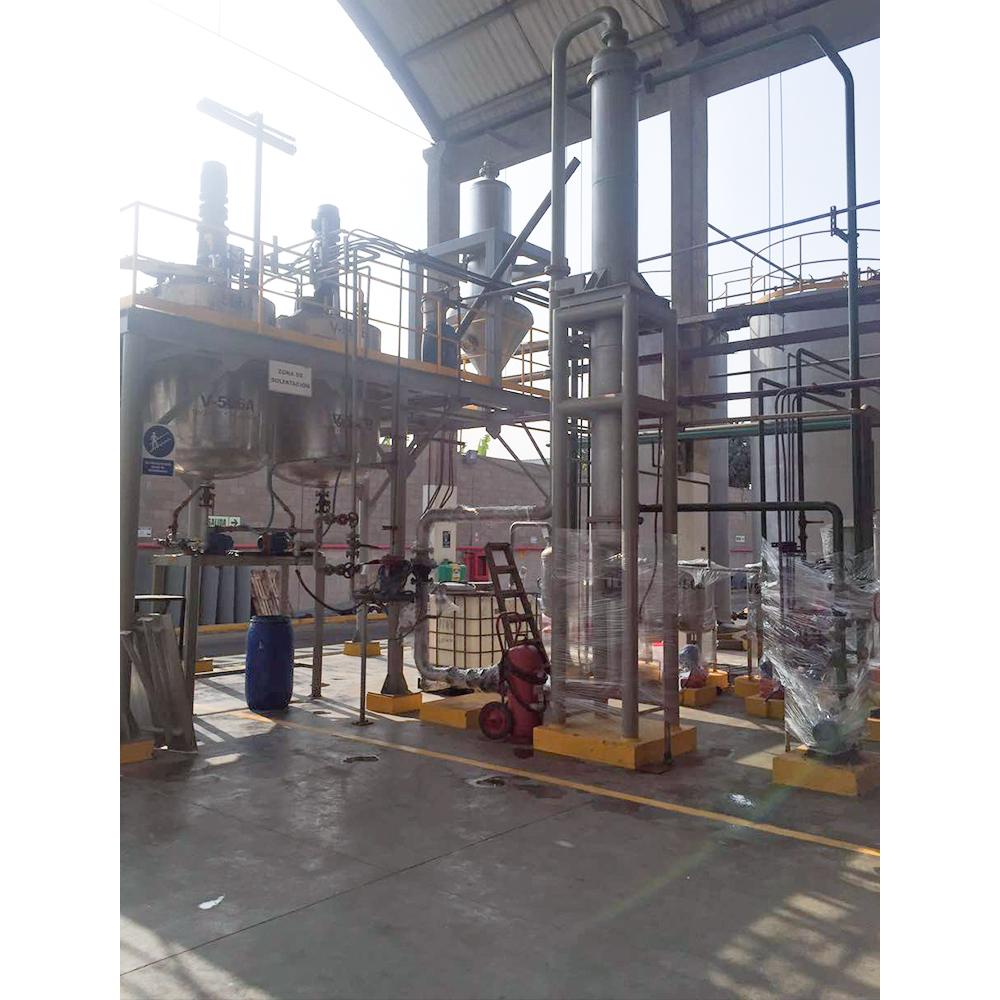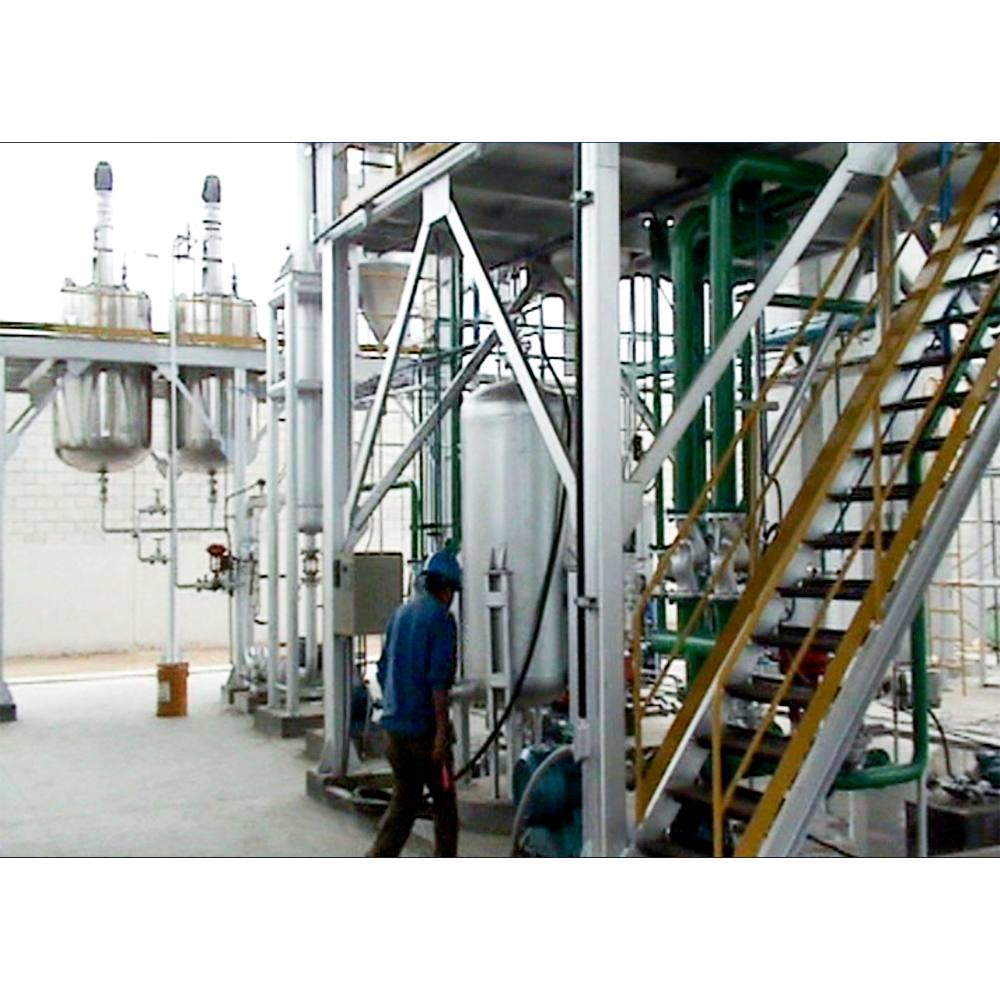- All
- Product Name
- Product Keyword
- Product Model
- Product Summary
- Product Description
- Multi Field Search

loading






| Availability: | |
|---|---|
| Quantity: | |
Pump-typed continuous neutralization is required to produce SLES with a concentration of greater than 70%. An accurate amount of ether sulphate ester is adjusted by a mass flow meter, and then enters into the continuous neutralization reaction pump inlet. Some other materials which are adjusted automatically by the mass flow meter and enter into the pump include:
1. neutralizer including alkali liquid, sodium hydroxide, ammonium hydroxide, potassium hydroxide, and triethanolamine, controlled by mass flow meter,
2. deionized process water controlled by mass flow meter,
3. SLES with a 10:1 reflux ratio degassed and cooled by neutralization and flashing evaporation device.
The four materials above have a high shear mixing reaction in the neutralization pump and enter into negative pressurized flashing evaporation tower. Before the materials enter the flashing evaporation tower, the PH value is continuously tracked and neutralized by PH meter; the amount of alkali liquor is adjusted automatically according to the value measured by PH meter. The flashing evaporation tower keeps the air pressure at -92Kpa. The SLES took the heat from neutralization reaction and degassed as transparent after it enters the porous distribution plate. The outlet temperature of the flashing evaporation tower is 45 ± 3℃. The degassed materials enter into neutralization circulating pump, the circulation rate of which can be adjusted and controlled at around 10:1. The reaction materials from the outlet of flashing evaporation tower can be carried into the neutralization adjusting tank. Huge amount of reaction materials inversely flow back to the reaction inlet and join the neutralization reaction. SLES PH value is continuously measured before this product goes into the neutralization adjusting tank.
The PH value of SLES is adjusted by adding buffering agent quantitatively when it enters into the adjusting tank; thereafter, the degassed SLES is transferred into product tank. Due to that the sulfuric acid ester hydrolyzes easily, SO3 can enter the sulfonation reactor only if the SO2 conversion rate is stable, that is, the molar ratio between SO3 and organic does not change. Therefore, SO3 needs to be absorbed by alkyl benzene to wait for a stable SO2 conversion rate when producing SLES. AEO2 can react in the sulphonation reactor only if the SO3 does not change.
In the neutralization unit, the amount of sulphate, alkali liquor, and process water is controlled by mass flow meter and frequency converter, while the reflux ratio is controlled by outlet pressure adjusting valve and circulating pump. PH value is measured simultaneously by the PH meter so that the amount of alkali is automatically controlled. The amount of active product is quantitatively adjusted by controlling the process water.
This is our company’s unique leading position in the world of Continuous Flashing Evaporation and Neutralization Technology, effectively controlling the content of 1,4 dioxane. In line with our proprietary sulfonation technology, the product process control will be better.
Pump-typed continuous neutralization is required to produce SLES with a concentration of greater than 70%. An accurate amount of ether sulphate ester is adjusted by a mass flow meter, and then enters into the continuous neutralization reaction pump inlet. Some other materials which are adjusted automatically by the mass flow meter and enter into the pump include:
1. neutralizer including alkali liquid, sodium hydroxide, ammonium hydroxide, potassium hydroxide, and triethanolamine, controlled by mass flow meter,
2. deionized process water controlled by mass flow meter,
3. SLES with a 10:1 reflux ratio degassed and cooled by neutralization and flashing evaporation device.
The four materials above have a high shear mixing reaction in the neutralization pump and enter into negative pressurized flashing evaporation tower. Before the materials enter the flashing evaporation tower, the PH value is continuously tracked and neutralized by PH meter; the amount of alkali liquor is adjusted automatically according to the value measured by PH meter. The flashing evaporation tower keeps the air pressure at -92Kpa. The SLES took the heat from neutralization reaction and degassed as transparent after it enters the porous distribution plate. The outlet temperature of the flashing evaporation tower is 45 ± 3℃. The degassed materials enter into neutralization circulating pump, the circulation rate of which can be adjusted and controlled at around 10:1. The reaction materials from the outlet of flashing evaporation tower can be carried into the neutralization adjusting tank. Huge amount of reaction materials inversely flow back to the reaction inlet and join the neutralization reaction. SLES PH value is continuously measured before this product goes into the neutralization adjusting tank.
The PH value of SLES is adjusted by adding buffering agent quantitatively when it enters into the adjusting tank; thereafter, the degassed SLES is transferred into product tank. Due to that the sulfuric acid ester hydrolyzes easily, SO3 can enter the sulfonation reactor only if the SO2 conversion rate is stable, that is, the molar ratio between SO3 and organic does not change. Therefore, SO3 needs to be absorbed by alkyl benzene to wait for a stable SO2 conversion rate when producing SLES. AEO2 can react in the sulphonation reactor only if the SO3 does not change.
In the neutralization unit, the amount of sulphate, alkali liquor, and process water is controlled by mass flow meter and frequency converter, while the reflux ratio is controlled by outlet pressure adjusting valve and circulating pump. PH value is measured simultaneously by the PH meter so that the amount of alkali is automatically controlled. The amount of active product is quantitatively adjusted by controlling the process water.
This is our company’s unique leading position in the world of Continuous Flashing Evaporation and Neutralization Technology, effectively controlling the content of 1,4 dioxane. In line with our proprietary sulfonation technology, the product process control will be better.







